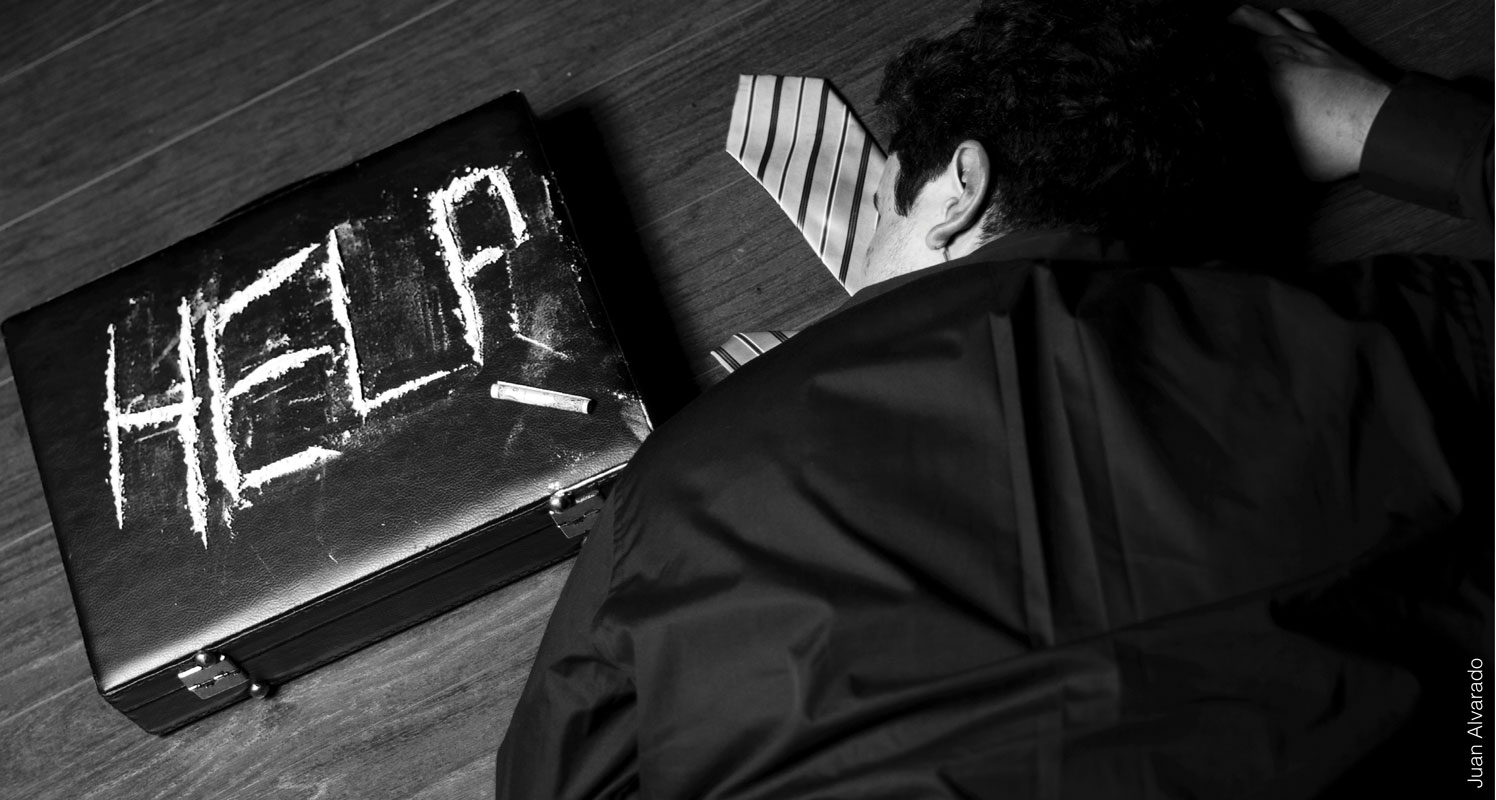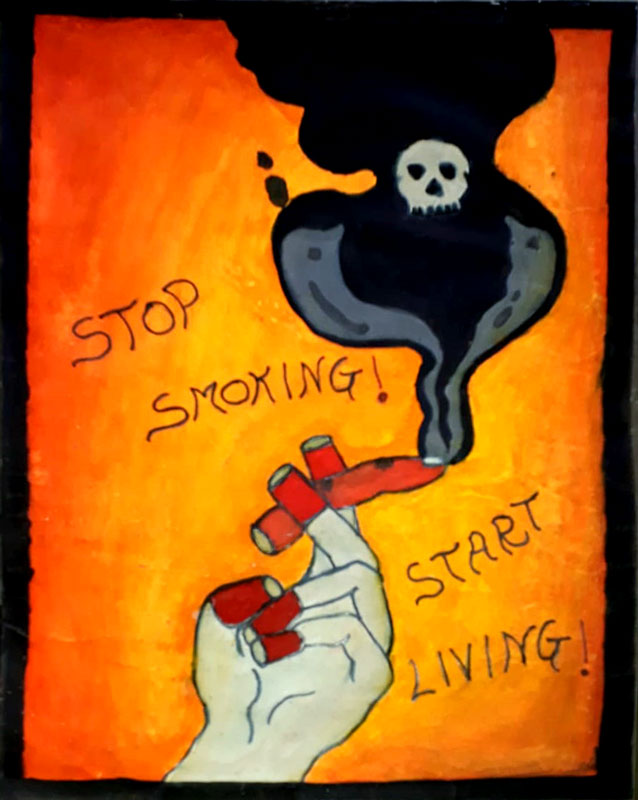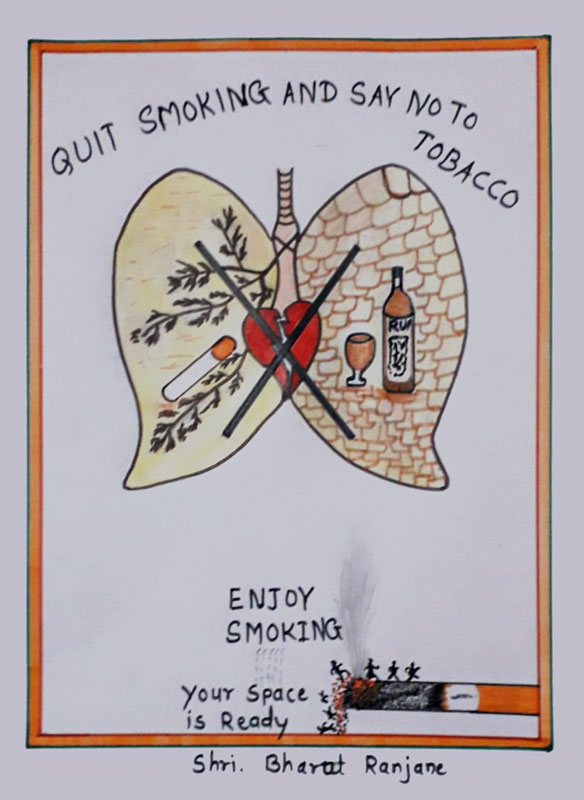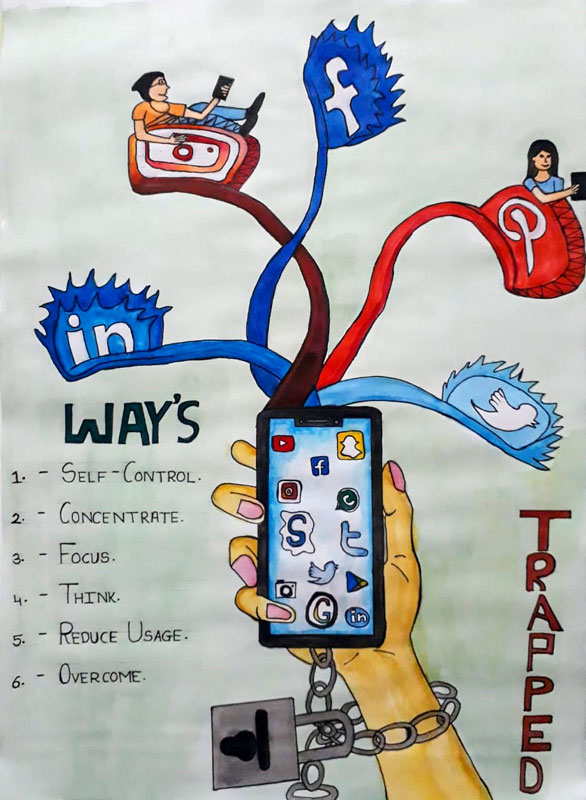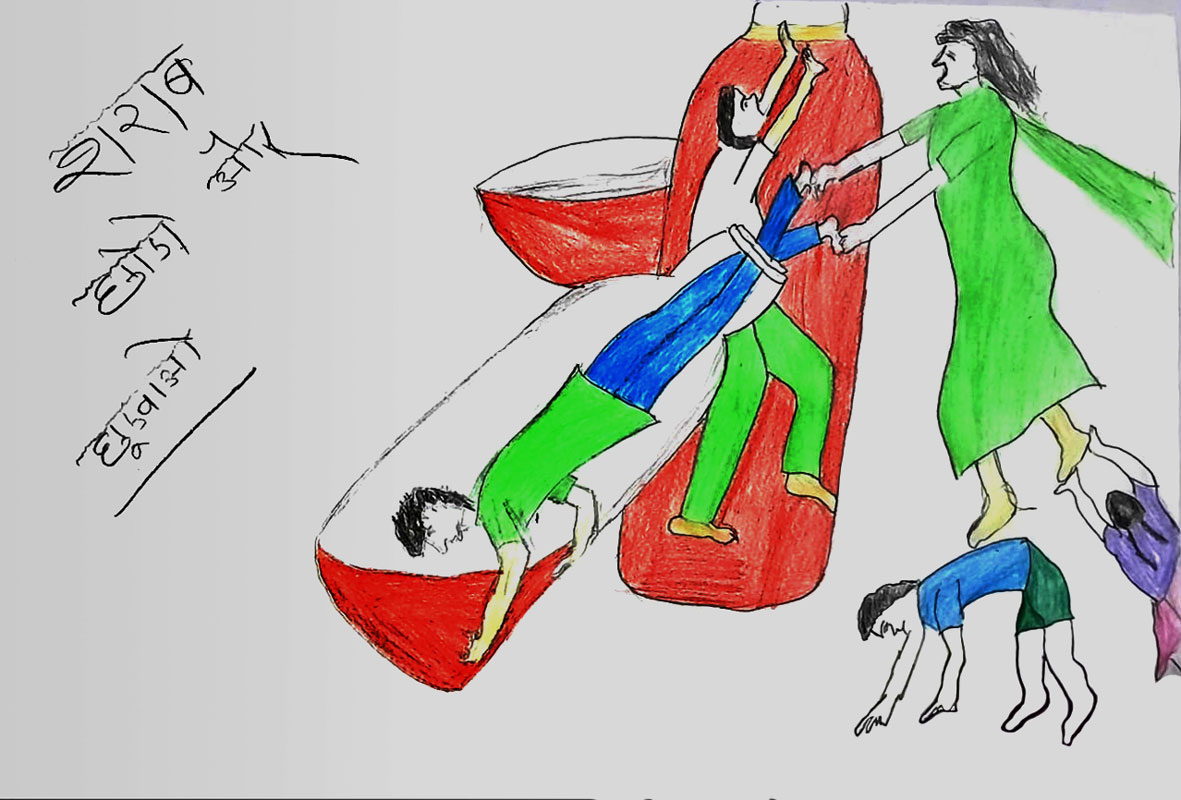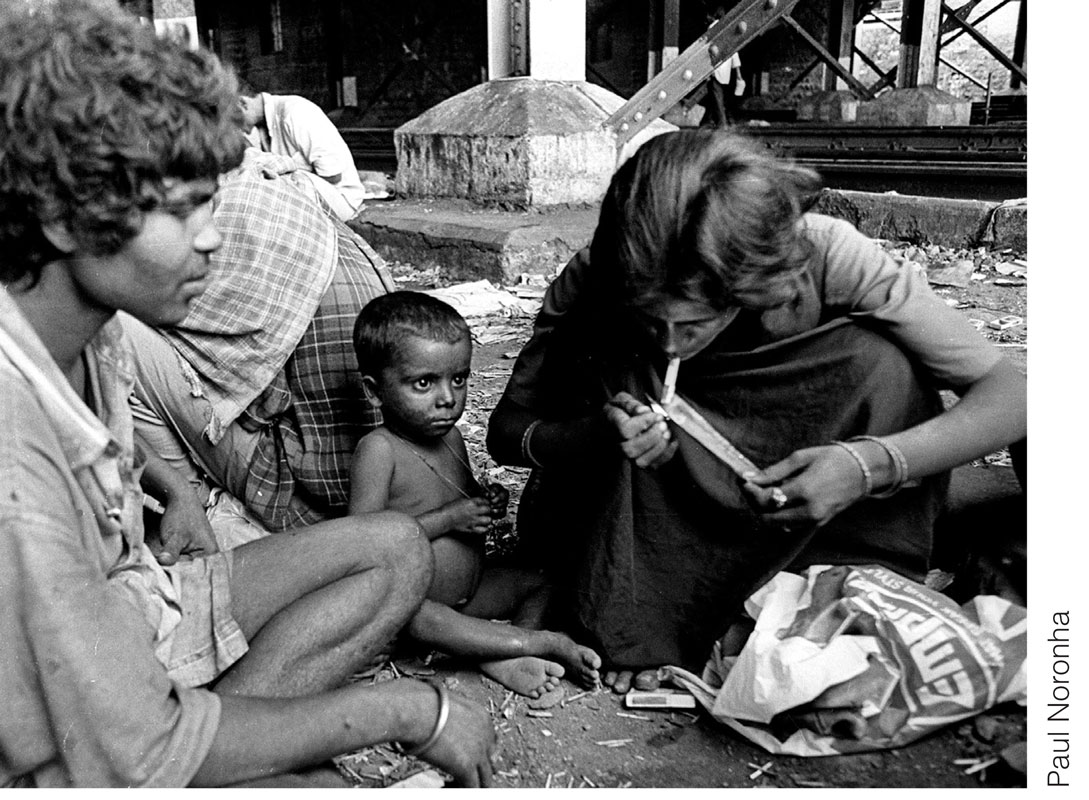A Rotary Action Group combats addiction
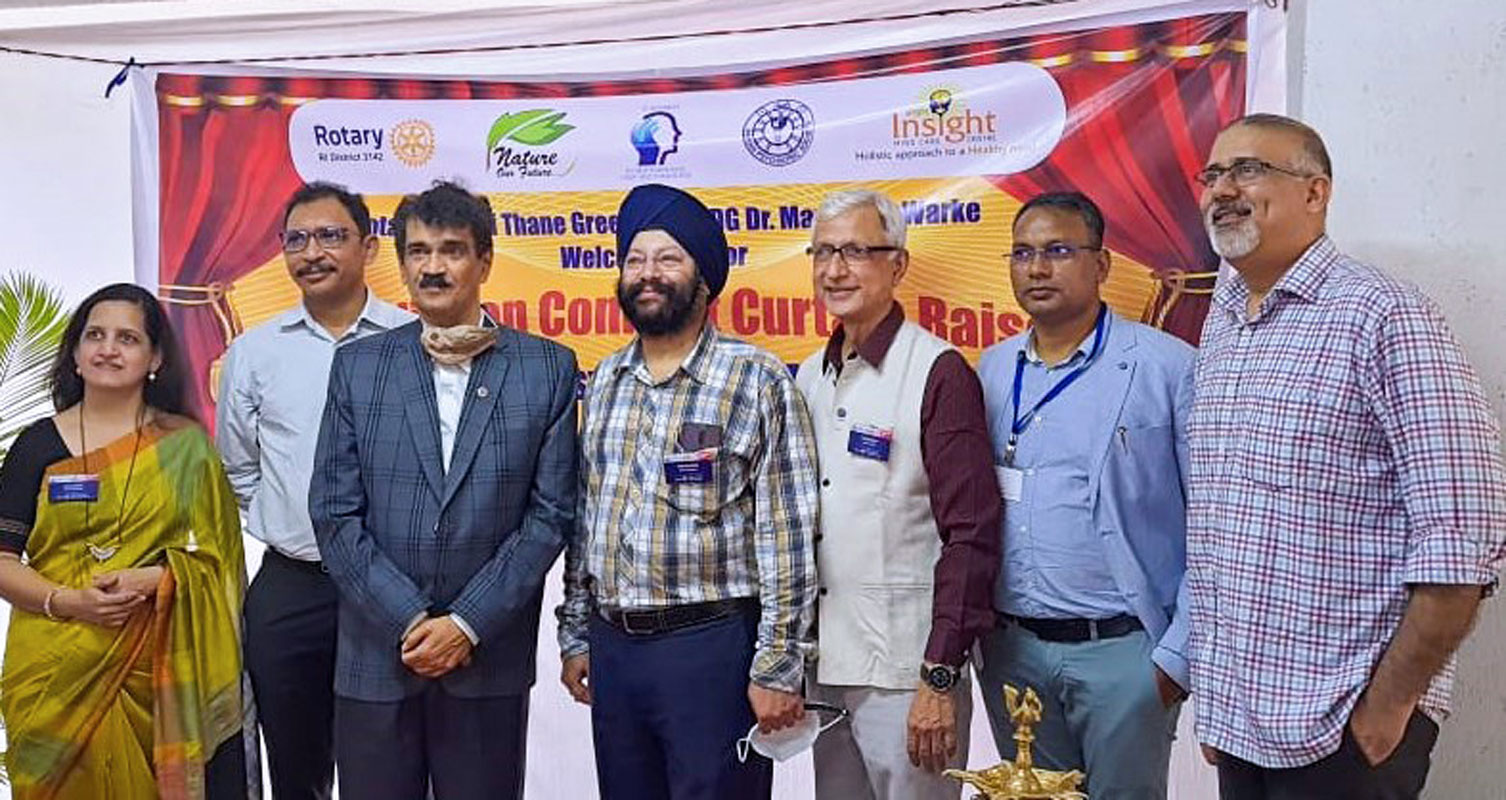
When Johan Maertens, vice-president and chair, Scientific Committee, of the Rotary Action Group for addiction prevention (RAG-AP) invited me to chair this action group, as he felt that I will be able to draw in more Rotarians for this cause, I decided to focus on India as substance abuse has become a huge problem in our country,” says past RI president Kalyan Banerjee, adding that in several European countries Rotary has done a lot of work in this area.
This was three years ago; Banerjee pulled in two past RI presidents — Jonathan Majiyagbe and Gary Huang — on board, put together a core team in India and sent out letters to all the RI districts in India, underlining the need for Rotarians to get seriously involved as “we are a country where addiction is a huge issue with large numbers addicted to tobacco, alcohol, drugs, etc. It’s a growing menace which needs to be tackled.”
But even as the initiative of involving Rotary clubs in India to address substance abuse took off, the corona pandemic hit and as Rotarians grappled with the challenges related to fighting Covid, this initiative took a back seat. But now, of the 40 RI districts, 20 have wrote back expressing their willingness to take this programme forward, says Banerjee.
“My main objective is to get each Rotary district from India to form a core group to work on addiction prevention and substance abuse. It is a fact that more people are dying from addiction of different kinds in India today than the number of people killed by Covid. This is a raging problem which not too many talk or are bothered about, except those affected and the families afflicted.
I believe this is something that needs to be taken on a serious footing, particularly as children and youth are likely to get addicted,” he says.
Most people don’t understand that addiction is a treatable disease and by treating an addict, we are not only saving a life, but also creating a happy family.
— PDG Himanshu Thackar
Three PDGs who are closely working closely with Banerjee to create awareness on the ill-effects of different forms of addiction in India and create avenues for treatment by forging partnerships with other groups, corporates and the government, are Ulhas Kolhatkar (RID 3142), Deepak Purohit (RID 3131) and Himanshu Thackar (RID 3060). “Kolhatkar, himself a paediatrician, has done a great job by talking to students, particularly in RID 3142, and also roping in other groups already working on addiction prevention in India. Purohit and Thackar are also involved in the various initiatives we have taken to talk to students, teachers, educating and motivating them to talk to larger groups to spread awareness on the dangers of addiction,” adds Banerjee.
PDG Kolhatkar says he is “deeply concerned about all kinds of addictions afflicting younger and younger children; so we are trying to focus on school kids. Invariably, the first exposure to any kind of addiction, especially in children, is tobacco; the second stage is alcohol and then come drugs.”
Intervenes Banerjee, “Today, apart from opium and other drugs, tobacco and alcohol, one of the most threatening forms of addiction in young children is addiction to the Internet. On the dark net, some youngsters have even committed suicide because of this addiction. And this is something that needs to be addressed. Another concern is that children are all the time playing games, or watching pornography. Whatever the addiction, the Internet has emerged as highly addictive in some groups in our country.”
He says that Maharashtra is one of the worst affected states, along with Punjab, as “depicted in the film Udta Punjab. The good news is that Rtn Manmohan Singh from Punjab, who is working on addiction prevention, is the brother of the new Punjab CM Charanjit Singh Channi, and such connections between Rotary and the government are being established everywhere, which is very helpful.”
Banerjee adds that a core member of the Rotary executive committee in India working on prevention of substance abuse is PDG Himanshu Thackar from Surat, RID 3060. “He and his wife have been working on de-addiction in Gujarat for the last 20 years and he is specifically focusing on people who have become de-addicted and helping them to stay so. As we know, the de-addicted need continuous help to prevent relapse, and they are the best ones to take the message to those who are potential future addicts, by telling them about the dangers of addiction from their personal experience.”
Kolhatkar adds that now the Internet has taken precedence over the other three forms of addiction — tobacco, alcohol and drugs — among the young. “Previously we used to see 14–15-year old students of Classes 9 or 10 with Internet addiction, but now the age has come down to 12–13 years and that is frightening. We now find that Class 7 and 8 kids are getting addicted to first tobacco, and then beer or other softer forms of alcohol… not hard liquor.”
As for Internet addiction, he now finds children between 5 and 8 years getting addicted, “particularly with classes going online during Covid, and children getting access to mobile phones even in homes where parents were earlier strict about giving them access to the cell phone.”
As mandated by the RAG on addiction prevention, many Rotary districts are holding workshops for psychiatrists, clinical psychologists, teachers and others on addiction prevention, and Kolhatkar says that at a recent training seminar “conducted as a part of our initiative Health Connect, participants shared many stories of 7, 8 and 9-year-old children getting addicted to the dark net. It was really disturbing.”
“What is alarming,” adds the child specialist, “is that everyday I am seeing children who are getting addicted to the mobile phone. They may not be strictly labelled so, because this is too small a period to make this classification, but the symptoms are clear. They are jittery, unstable and are displaying symptoms of ADHD (Attention Deficit Hyperactivity Disorder) and some of them are getting labelled as ASD (Autism Spectrum Disorder) but I do not know whether they really come under these heads or are part of the Internet addiction syndrome.”
PRIP Banerjee adds that as RAG started working on addiction prevention, “we’ve found that in Mumbai students, drug-taking is a significant addiction, particularly in the slum areas. The horrifying part is that slum children are getting addicted to drugs, and vendors and peddlers are well spread out in Mumbai slums. They are present at all the nukkads (corners). The result is that slum kids have taken to stealing and selling anything they can lay their hands on, just to buy drugs. The money earned by the father, or kept aside by the mother to buy food for the family is stolen by the kid, who is addicted. The parents are not in control at all.”
Kolhatkar underlines the need for a whole lot of training programmes. On the training methodology, he says, “We are developing a programme called School Connect and in the first phase this will train the physicians, psychiatrists and psychologists so that we will get a bank of at least 50 trained people. This is the first step. These people will go to the schools and address PTA meetings and teachers; we have different modules to train the latter. Next Rotarians will be trained and after Rotary intervention, training of students will start.” This will involve both spotting children with addiction, and subsequently, with the help of clinical psychologists the de-addiction of these children will begin. All this has been worked out, he says.
PDG Purohit adds, “For three years now — and since 2019 — we have been working on addiction prevention. Looking back, we are surprised how we ourselves were ignorant and unaware of this big problem of addiction in our community. In Rotary we’ve been working on so many different focus areas but somehow addiction has not featured in our routine community service work of the district. Only when we started working on this, we realised the severity of this problem.”
Sharing numbers, he says, what causes great concern is that in India, almost a third in the 20–30-year age group, or 33 per cent of young adults, are addicted to tobacco. “Also, today India has the dubious distinction of having 12 per cent of the world’s smokers; about 27.5 crore of our population is addicted only to tobacco. So the problem is huge. And tobacco has been proved beyond doubt to be the leading cause of all forms of cancer.”
Another alarming statistic given by Purohit is that “in the last three years alone, there has been a three-fold increase in alcohol consumption among young Indians. About 62.5 million Indians are addicted… not social drinking but addiction… to alcohol, which is directly linked to liver cirrhosis.”
The same startling statistics stare us in the face when it comes to addiction to various types of drugs. In the last 10 years alone, India has seen a 30 per cent increase in drug addiction. “One statistic says that over 60 per cent of Punjab’s youth are taking drugs in some form or the other, 600,000 people are dying every year in the world due to drug-related problems, so addiction and substance abuse is a much bigger problem than corona.”
In the background of these numbers, adds Purohit, “under past RI president Banerjee’s leadership we approached Rotary districts in India to work on substance abuse by early 2020. About 20 showed interest in working for this cause. But then the pandemic hit and schools and colleges were closed.” As work has to be done with and through schools and colleges, “we resorted to zoom and internet for training and awareness and created a Rotary website rotaryaddictionprevention.in. It is operational and suggests easy projects that clubs can do… our own product for our own people.”
Districts have also done poster competitions to raise awareness and these have got enthusiastic response, “which shows people are interested. Then there are video competitions; a 2.5-minute video on drug prevention done by Rotaractors has created a good impact,” he adds.
In RID 3131, an addiction prevention centre has been started by a Rotarian where 50 children are taking treatment.
Right now, this RAG is focusing on awareness creation and prevention, and identifying areas where Rotary clubs and their members can work. “We have to give clubs projects that are simple to do, and involve Rotaractors too, as they can make a big impact. We have created some PowerPoint presentations that can be downloaded from our website and presented at club or district meets.”
Banerjee adds that apart from approaching clinicians and experts who can guide Rotarians working on prevention of substance abuse, “we are also in touch with other non-Rotary addiction prevention groups such as Alcoholics Anonymous and Narcotics Anonymous.”
Kolhatkar says, “We’ve formed a national scientific advisory committee which includes big names such as Dr Pratima Murthy, director of Nimhans, Bengaluru, and other experts. These people have worked day and night for two months and created two beautiful programmes — Health Connect and School Connect — and the next on the cards is Rotarian Connect for our national committee.”
But, says Banerjee, “our final vehicle is the club, because ultimately all Rotary work and action takes place at the club level. We are concentrating on how to create a volunteer base and train them, so that they are useful in tackling this huge problem.”
Kolhatkar adds that when Rotarians themselves, who were once addicted but have now won the battle, come forward to lead from the front, it makes a big difference. “For instance, one of our very senior addiction prevention leaders says very openly that he was himself addicted to alcohol 30 years earlier, but is now addiction-free, and he is such an asset for our district.”
Corporate involvement and partnership is being forged through requesting corporates to provide infrastructure and their premises, for training. “Our partners have promised to sponsor all our de-addiction programmes.”
PRIP Banerjee adds that the “government is very proactive too in addiction prevention and almost every district has a de-addiction centre which is run by the Ministry of Social Welfare, and PDG Himanshu Thackar is trying to work with them.”
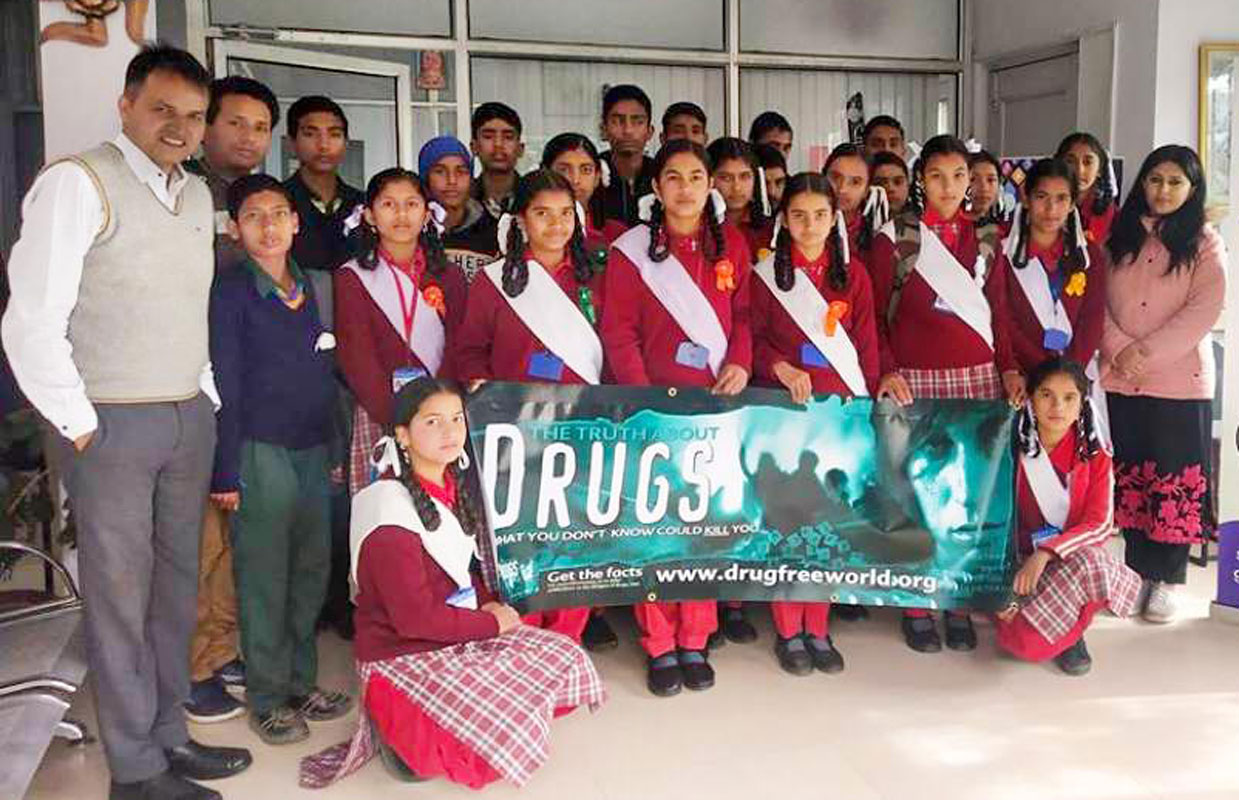
Underlining the importance of Rotarians and Rotaractors guiding and bringing people together to fight substance abuse, he says that this initiative was particularly important for women, “because when the husbands get addicted, the wives suffer the most. We know we have a big problem also in the North East and I am happy to report that our Rotarians in the North East are very active and involved… in places such as Assam, Meghalaya, etc. We are hoping for better engagement with Rotary districts south of Hyderabad.”
Dr Judita Syiemlieh, past president of RC Orchid City Shillong, a core committee member of RAG-AP, says, “The problem was rampant in Manipur and Mizoram for long, and now we are seeing addiction in Shillong too. We have been trying very hard to sensitise Rotarians on the need to work in this area, have been forming committees at the local level, and also trying to form a partnership with the government.”
PDG Thackar and his wife Aruna, a trained social worker, have been working relentlessly on addiction prevention right from 1989, when she set up an NGO in Surat called Parivartan Deaddiction and Rehabilitation Centre. “She has a great experience in working with addicts and must have handled around 25,000 people since 1989,” says Thackar.
After the NGO was started, and Aruna began working with the addicted, Thackar helped out through liaison with the GoI. “The result is that the government has recognised Parivartan as a grant programme, and I coordinate with the government on various issues, including developing systems, and learning from its vast experience in addiction prevention.”
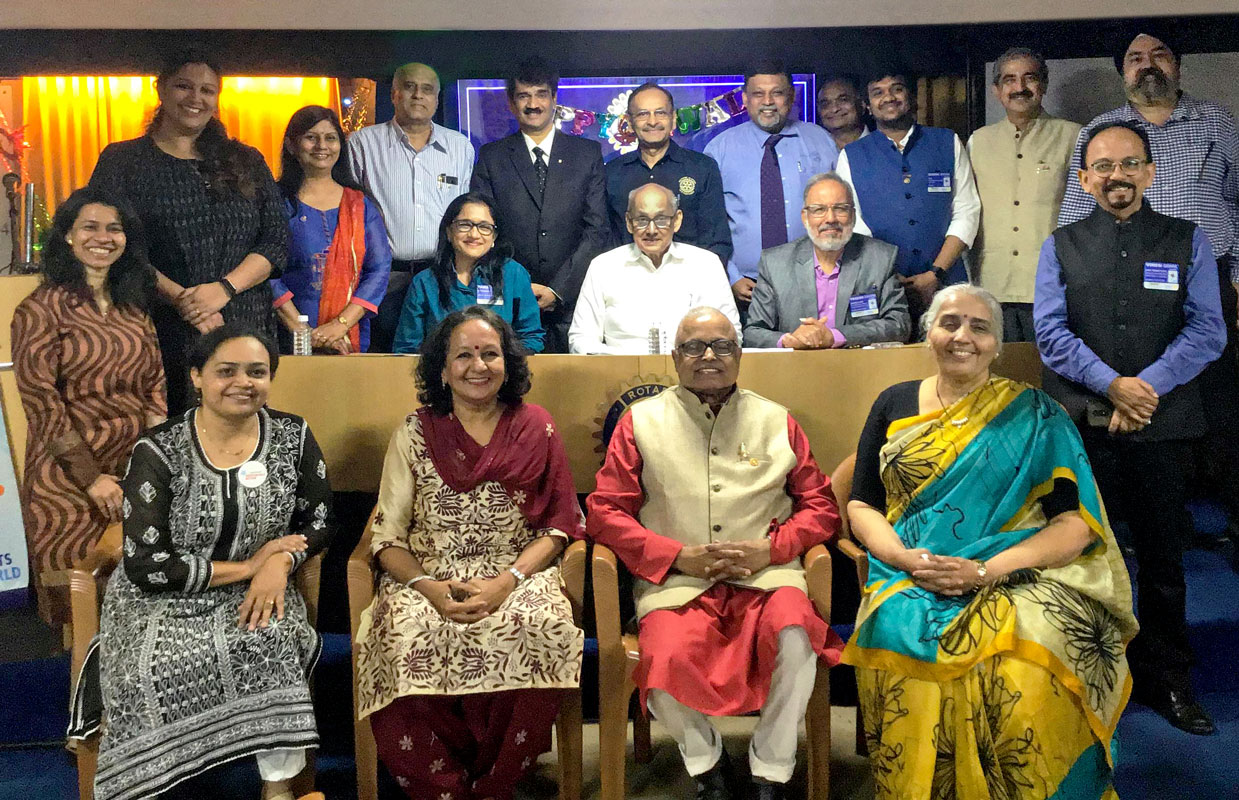
He says that what “most people don’t understand is that addiction of any kind is a treatable disease, and that is where we, as Rotarians, have to create awareness. Because by treating an addict, we are not only saving a life, but also creating a happy family. That is our goal for Parivartan, and this Rotary project too.”
The couple already has a rich and several decades’ experience in developing skits, glove puppet shows, street plays, workshops for school and college students, road rallies, apart from skill development of various types required in any de-addiction programme.
The PDG recalls that as governor in 1995–96, during his visit to the clubs, Aruna made it a point to get the help of Rotaractors and Inner Wheel members to conduct audio-visual presentations to create awareness on both addiction prevention and treatment.
The passionate crusader answers the question on the kind of dent Rotary can make on addiction prevention and treatment in India thus: “Rotary can do what we have done for polio, and for that we will have to work with and involve the top district leadership in this project.” He recommends that every district should appoint a chairperson, with a three-year term, “and all the clubs should have committees dedicated to this cause. We can then train the designated people to do programmes in the community, concentrating on prevention, which is very necessary.” There are three phases in addiction — primary, secondary and tertiary — and in the tertiary phase comes treatment, rehabilitation and reintegration of the de-addiction person in mainstream society. “In the last, Rotary can really play a very important role.”
Thackar is already “negotiating with the GoI to become a partner in this RAG initiative, by supporting our awareness campaigns, give us addition prevention content in regional languages and also training our volunteers. The government is very excited to partner with Rotary in this initiative, the ministers are very appreciative and enthusiastic, but the bureaucracy always takes some time!”
PDG Purohit adds that at the moment this RAG’s objective is to reach as many Rotary clubs as possible and impress on the members how crucial this fight against substance abuse is. “Somehow, this has not yet become a focus activity of Rotarians; we need to motivate them to nip addiction of any form in the bud in places where it is just beginning and control it where it has already spread. Happily, our Rotaractors are already in touch with schools and colleges through our “connect” programmes, because these are the main places where addiction takes root.”
As Banerjee puts it, “Rotary has the means and the people, but we don’t have the method, and that’s what we are trying to overcome. One of the methods is to form clubs dedicated, at least partially, to fighting substance abuse. A beginning has already been made in Mumbai, with a cause-based hybrid club — Rotary Club of Addiction Prevention — with 30 members.”
While the Rotaract club of Himayathnagar conducted an alcohol awareness programme, a detailed workshop by the RAG-AP team and an Inner Wheel club was organised.
Telltale symptoms of addiction
I ask PDG Ulhas Kolhatkar about how a parent can tell that her child is addicted, because many parents have no clue, or are in denial. So what are the telltale symptoms for a parent to get warned that his child may have some form of addiction?
His response: “First, the children will be very reluctant to undergo routine studies. Other signs are sleeplessness or insomnia, because many of these children are on social media, Facebook, Instagram or the dark net, mostly during the night hours when the parents are sleeping.”
The third symptom to look out for, he adds, is that as they are online quite a lot, “because of this overexposure or over indulgence on the Internet, they end up with a problem of anorexia or decreased appetite. Also gradually, scholastic performance will decrease, their grades will fall and the child will slip from excellent to average to poor and will finally fail in exams. That is the usual journey of addiction among children.
He admits seeing the denial syndrome in many parents who first say that our child cannot be addicted to any evil. But invariably, first the teacher will notice some symptoms in the child and will quiz both the students and the parents. “At first, normally the parents will deny that their child could be addicted. Next, the cultural taboos kick in and the parent will say my child has been brought up so well, taught the right values, etc, and will not even touch drugs. So we ask them to see the counsellor, who gives parents tips on what to observe or watch out for in the child. Scolding the child is of no use, as is punishing them by keeping them hungry; it simply
doesn’t work.”
Parents have to be taught by trained professionals the proper techniques of handling an addicted child… and why the child is doing it. With proper handling, love and affection the child can be weaned out of addiction, he adds.
That is why counselling is a must. While private schools have counsellors, municipal and government schools, thanks to lack of financial resources, don’t have them. “But in private schools, particularly in the CBSE and ICSE schools, it has almost become compulsory to have counsellors,” he says. Now in government and regional language schools, “through help from local Rotary clubs, we are trying to provide the services of counsellors.”
What clubs can do
Past RI president Kalyan Banerjee who heads Rotary International’s action group on substance abuse gives these pointers to clubs in order to identify the root causes of addiction to tobacco, drugs, alcohol, the dark net, etc.
Clubs can participate in this programme thus:
- Hold orientation programmes for members by inviting outside experts to address them
- Form a small addiction prevention committee
- Organise awareness lectures with the help of AA (Alcohol Anonymous), NA (Narcotics Anonymous) or other experts in the field of tobacco and Internet de-addiction
- Hold competitions — posters, essay, poems, videos, etc
- Awareness rallies
- Organise cyber suraksha programme (RAG can help here)
- Organise health camps or exhibitions
- Hold marathon, cyclothon, walkathon, etc
- Issue certificates to small institutes, organisations once they become tobacco or alcohol-free
- Recognise services of individual Rotarians by giving ‘Rotary Addiction Prevention Champion Awards’
- Start de-addiction clinics, rehabilitation centres, etc.

